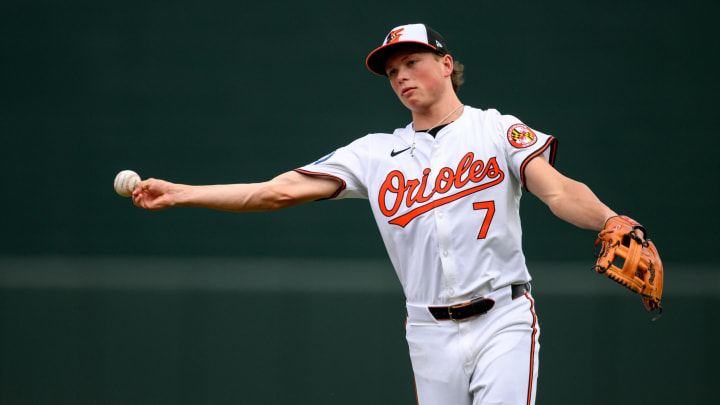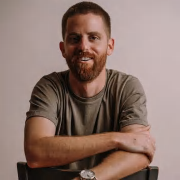American League Rookie Roundup: Orioles Attempting to Merge Future With Present

Welcome to the Rookie Roundup, a weekly look-in on baseball’s best and most interesting first-year players. Last week, we dove deep on how an impressive group of rookie pitchers have buoyed the Los Angeles Dodgers amid a rash of injuries. Next up is a look at how the Baltimore Orioles dipped into their prospect pool for roster reinforcements.
We’re less than a week removed from a trade deadline that was something of a letdown. A big reason for that feeling of dissatisfaction is that most of the teams with a deep well of prospects to cash in for established stars ultimately decided against such a strategy. And no club embodied that tactic more than the Orioles.
In the days and hours leading up to the deadline, Baltimore was linked to basically every big name rumored to be gettable. But making a play for Tarik Skubal, Garrett Crochet or Tanner Scott would have meant withdrawing from its ATM of high-end prospects, something general manager Mike Elias opted against. Instead, the organization decided to part ways with prospects from its second or third tier in less buzzy trades for Zach Eflin, Gregory Soto and Trevor Rogers.
The follow up to those deals is our focus here, as the Orioles last week recalled baseball’s top prospect in Jackson Holliday for his second stint in the majors, followed by the move to call up slugging third baseman Coby Mayo for his big-league debut. Each player ranks among MLB Pipeline’s top 15 prospects, and now that Baltimore has chosen its deadline path, both have gone from trade fodder to potential difference makers in baseball’s tightest division race.
First, a look at Holliday. The 20-year-old’s highly-anticipated debut back in April was an outright disaster, with Holliday going 2-for-34 at the plate with 18 strikeouts before being sent back to the minors after just 10 games. He fared much better back in Triple A, batting .259/.421/.455 after the demotion with nearly as many walks (63) as strikeouts (69), and was called back up on Wednesday. It’s early, but the results have been much better this time around, with Holliday going 7-for-18 with two homers—including a grand slam.
JACKSON HOLLIDAY!
— MLB (@MLB) July 31, 2024
His first big league homer is a grand slam! pic.twitter.com/UhYSrT2MiQ
After looking completely overwhelmed in April, Holliday is showing why he was the game’s consensus No. 1 prospect ahead of this season. He’s routinely hitting balls with exit velocities north of 100 mph, and now has a clear path to everyday playing time with Jordan Westburg and Jorge Mateo currently on the injured list.
Those absences are also clearing a path for Mayo, whom Orioles fans have been clamoring to see in the majors for months now. The 22-year-old third baseman has an odd-looking swing and doesn’t offer much defensive value, but he dominated Triple A pitching this season, batting .301/.375/.586 with 20 homers in only 77 games. Mayo is still hitless through his first three games since the call-up, but the fact that he’s started all three contests suggests that manager Brandon Hyde is ready to give him a long runway over the team’s most likely hot corner alternative, Ramón Urías.
Making things even better for Baltimore is how the arrivals of Holliday and Mayo have coincided with a resurgence from fellow rookie Colton Cowser. Cowser has been a mainstay for the O’s all year, ranking third with 105 games played, but his bat had cooled off after a hot start to the season.
From May 1 through the All-Star break, Cowser batted .183 with 58 strikeouts and just six home runs in 205 plate appearances. He’s looked like a new hitter in the second half, posting a .391/.452/.625 slash line with four homers in 17 games.
That uptick in production couldn’t have come at a better time for the Orioles, who have seen their division lead vanish as the New York Yankees have won seven of their last eight games. The AL East race should go down to the wire, and how this trio of rookies performs could significantly impact who emerges on top.
The Orioles face a unique predicament—one that their rivals won’t greet with much sympathy—in that they have so much young talent waiting in the wings behind a slew of established, in-their-primes veterans. That depth has created an embarrassment of riches and makes for a complicated puzzle to piece together, with Hyde challenged to find a way to meld the two timelines in a manner that doesn’t hinder the youngsters’ development or alienate the group of established players.
It’s the epitome of a first-world problem, but one that Baltimore will need to get right in order to chart the best course for its future—both in the short- and long-term.
